Jeff Monticello school principal


Visible Learning: A Synthesis of Over 800 Meta-Analyses Relating to Achievement 1st Edition
Digital Literacy for St. Cloud State University


Open Textbook Webinar — a 90-minute online meeting to learn about open textbooks.
Peer review of open textbooks is a critical component of assessing quality and supporting faculty looking for resources to use in their own classes. After the workshop, you’ll be eligible to earn a $200 stipend if you provide a short review of an open textbook from the OpenTextbook Library. Reviews are due 6-8 weeks following the workshop.
To prepare for the webinar, please take a few minutes and visit the Open Textbook Library (http://open.umn.edu/opentextbooks/). Glance through the Open Textbook Library and look for textbooks in your discipline that may be appropriate for you to review. In order to receive the $200 stipend, you must 1) participate in the webinar and 2) complete a textbook review. (Please note: There may not be texts available for review in your areas of expertise.)
When: Wednesday, November 14, 2018; 2:30 pm – 4:00 pm
Note that additional Open Textbook Webinars are scheduled throughout the academic year. Please contact Karen Pikula, OER Faculty Development Coordinator, at Karen.Pikula@minnstate.edu if you cannot attend the meeting on Monday.
How: Join the webinar through Adobe Connect
My notes:
3 models of creating textbooks: 1. write a book on their own 2. commercial model 3. Funder
Creative Common and copyright.
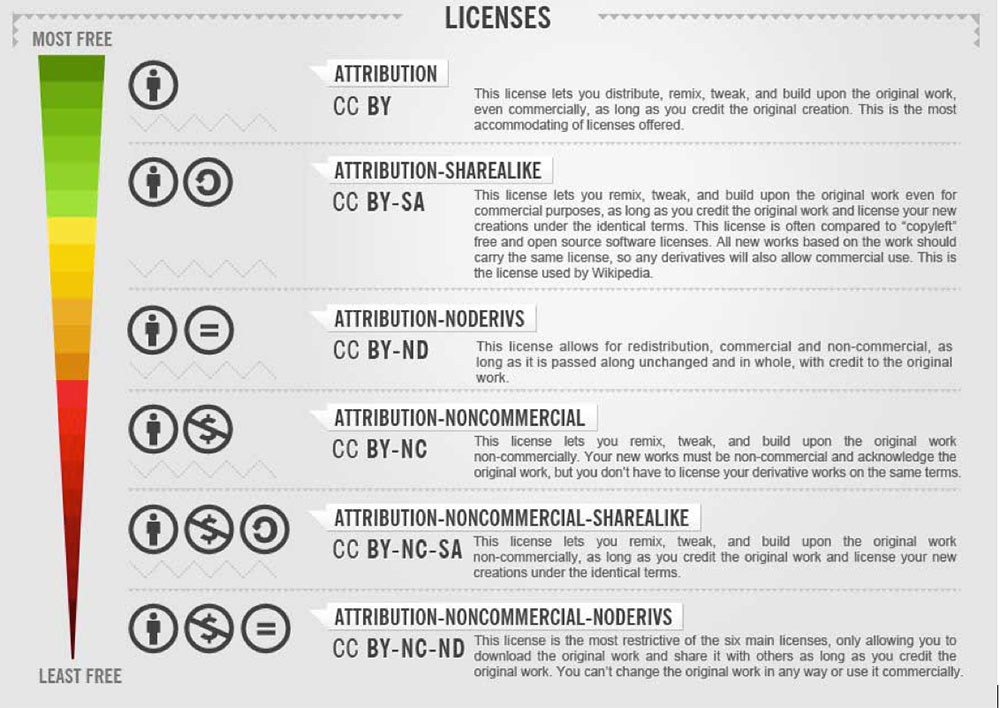
CC licenses free to: copy, share, edit, mix, keep, use
reviewing a textbook in the OER. Edit a book in OER
November 27 – 29, 2018 Savannah, GA
https://www.academicimpressions.com/microcredentials-and-digital-badges-in-higher-education
During this session, you will learn how to ask the right questions and evaluate if badges are a good fit within your unique institutional context, including determining ROI on badging efforts. You’ll also learn how to assess the competencies behind digital badges.
This session will allow for greater understanding of Open Badges standards, the variety of technology software and platforms, and the portability of badges. We will also explore emerging trends in the digital badging space and discuss campus considerations.
During this hour, we will take a closer look at answering key financial questions surrounding badges:
Badging can be a catalyst for partnerships between higher education and industry. In this session, you will have the opportunity to learn more about strategies for collaborating with industry in the development of badges and how badges align with employer expectations.
Now that we have a better idea of the “why” and “what” of badges, how do we market their value to external and internal stakeholders? You’ll see examples of how other institutions are designing and marketing their badges.
Alongside your peers and our expert instructors, you will have the opportunity to brainstorm ideas, get feedback, ask questions, and get answers.
Most institutions are getting into the badging game, and we’ll talk about the far-reaching considerations in the world of badging. We’ll use this time to engage in forward-thinking and discuss the future of badging and what future trends in badging might be.
+++++++++++++
more on microcredentialing in this IMS blog
https://blog.stcloudstate.edu/ims?s=microcredentialing
Google Expeditions can be a fairly inexpensive way to present content. Students who have smartphones (Android or iOS) can download the Google Cardboard app and Google Expeditions for free. VR glasses can improve the experience but are not required.
Ideas for using VR in class
+++++++++++++++
more on Google Expeditions in this IMS blog
https://blog.stcloudstate.edu/ims?s=google+expeditions
November 7, 2018 | 1:00 – 2:00 p.m. EST
Creating Digital Badges to Incentivize Participation in Faculty Development
Badges are more than just participation trophies. Design them to commensurately represent the knowledge and skills gained.
While many institutions have used digital badges as an alternative way to recognize the skills and knowledge developed by students, some are also starting to use this approach in their in-house professional development programs – especially in faculty development programs.
By offering well-designed badges that accompany these programs, you can boost both participation and impact. Join us for this online training and learn how to design your badges to encourage deeper engagement that goes beyond “showing up”. Our instructor, Lindsay Doukopoulos, will share best practices for badging criteria at Auburn University, where 82% of participants chose to earn badges at annual professional development workshops.
Assistant Director, Biggio Center for the Enhancement of Teaching and Learning, Auburn University
Lindsay’s teaching expertise includes experiential, active, and team-based learning in small and large lecture formats. Her research interests include instructional technologies and the use of digital artifacts (e.g., badging, ePortfolios, etc.) to assess and enhance integrated learning, gameful learning, and metacognition for students and faculty.
After a brief overview of our instructor’s faculty development badging program, we’ll walk through several badges Auburn has implemented for faculty. For each badge collection, we’ll address the following:
We’ll close with a brief exercise that will let you start designing your own badge criteria for a program on your campus.
$525 through Oct 31$600
Live Webcast + Recording
++++++++++++++++
+++++++++++++++++
more on badges in this IMS blog
https://blog.stcloudstate.edu/ims?s=badges
Rebecca Vukovic Oct 11, 2018
Use of students’ mobile phones during the lesson, when instructed properly, can be an effective tool when learning foreign languages and many other subjects.
Santiago, P., et al. (2016), OECD Reviews of School Resources: Estonia 2016, OECD Reviews of School Resources, OECD Publishing, Paris, http://dx.doi.org/10.1787/9789264251731-en.
++++++++++++++++++
more on Finland Phenomenon in this IMS blog
https://blog.stcloudstate.edu/ims?s=finland+phenomenon
Join us in Savannah this November for our conference, Microcredentials and Digital Badges in Higher Education,
and learn the strategies and processes that other institutions have used to develop digital badge initiatives and programs. You’ll learn the different ways that badges can add value to the learner experience, key considerations for developing badges, and how to effectively connect learners to industry.
Your instructor panel for this event is an impressive lineup of experienced speakers, all from higher ed themselves, who have been immersed in this work and have likely seen and overcome the same challenges you have. Come ready to learn from the experts.
+++++++++
more on microcredentialing in this IMS blog
https://blog.stcloudstate.edu/ims?s=microcredentialing
https://www.educause.edu/eli/initiatives/key-issues-in-teaching-and-learning
A roster of results since 2011 is here.
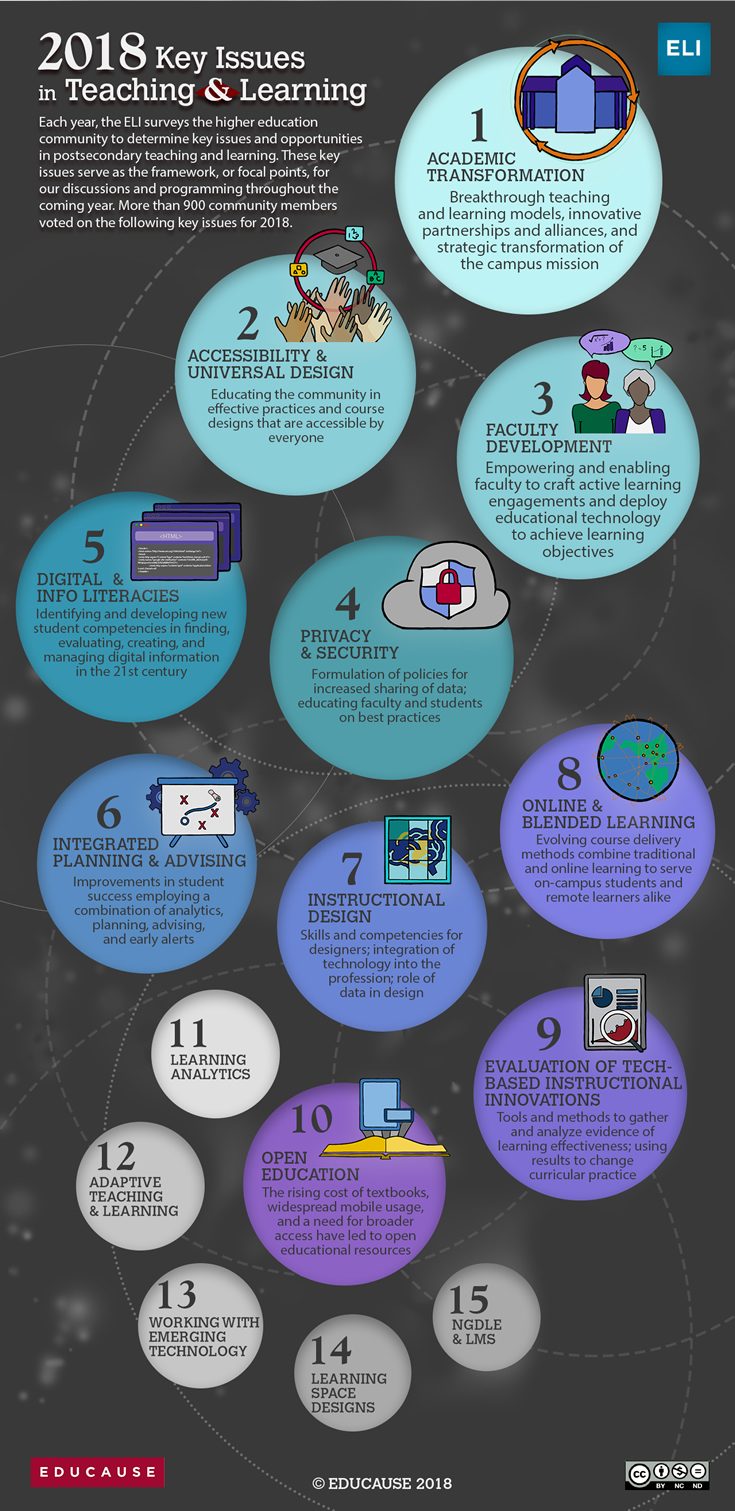
https://cdn.nmc.org/media/2017-nmc-strategic-brief-digital-literacy-in-higher-education-II.pdf
Three Models of Digital Literacy: Universal, Creative, Literacy Across Disciplines
United States digital literacy frameworks tend to focus on educational policy details and personal empowerment, the latter encouraging learners to become more effective students, better creators, smarter information consumers, and more influential members of their community.
National policies are vitally important in European digital literacy work, unsurprising for a continent well populated with nation-states and struggling to redefine itself, while still trying to grow economies in the wake of the 2008 financial crisis and subsequent financial pressures
African digital literacy is more business-oriented.
Middle Eastern nations offer yet another variation, with a strong focus on media literacy. As with other regions, this can be a response to countries with strong state influence or control over local media. It can also represent a drive to produce more locally-sourced content, as opposed to consuming material from abroad, which may elicit criticism of neocolonialism or religious challenges.
p. 14 Digital literacy for Humanities: What does it mean to be digitally literate in history, literature, or philosophy? Creativity in these disciplines often involves textuality, given the large role writing plays in them, as, for example, in the Folger Shakespeare Library’s instructor’s guide. In the digital realm, this can include web-based writing through social media, along with the creation of multimedia projects through posters, presentations, and video. Information literacy remains a key part of digital literacy in the humanities. The digital humanities movement has not seen much connection with digital literacy, unfortunately, but their alignment seems likely, given the turn toward using digital technologies to explore humanities questions. That development could then foster a spread of other technologies and approaches to the rest of the humanities, including mapping, data visualization, text mining, web-based digital archives, and “distant reading” (working with very large bodies of texts). The digital humanities’ emphasis on making projects may also increase
Digital Literacy for Business: Digital literacy in this world is focused on manipulation of data, from spreadsheets to more advanced modeling software, leading up to degrees in management information systems. Management classes unsurprisingly focus on how to organize people working on and with digital tools.
Digital Literacy for Computer Science: Naturally, coding appears as a central competency within this discipline. Other aspects of the digital world feature prominently, including hardware and network architecture. Some courses housed within the computer science discipline offer a deeper examination of the impact of computing on society and politics, along with how to use digital tools. Media production plays a minor role here, beyond publications (posters, videos), as many institutions assign multimedia to other departments. Looking forward to a future when automation has become both more widespread and powerful, developing artificial intelligence projects will potentially play a role in computer science literacy.
In traditional instruction, students’ first contact with new ideas happens in class, usually through direct instruction from the professor; after exposure to the basics, students are turned out of the classroom to tackle the most difficult tasks in learning — those that involve application, analysis, synthesis, and creativity — in their individual spaces. Flipped learning reverses this, by moving first contact with new concepts to the individual space and using the newly-expanded time in class for students to pursue difficult, higher-level tasks together, with the instructor as a guide.
Let’s take a look at some of the myths about flipped learning and try to find the facts.
Myth: Flipped learning is predicated on recording videos for students to watch before class.
Fact: Flipped learning does not require video. Although many real-life implementations of flipped learning use video, there’s nothing that says video must be used. In fact, one of the earliest instances of flipped learning — Eric Mazur’s peer instruction concept, used in Harvard physics classes — uses no video but rather an online text outfitted with social annotation software. And one of the most successful public instances of flipped learning, an edX course on numerical methods designed by Lorena Barba of George Washington University, uses precisely one video. Video is simply not necessary for flipped learning, and many alternatives to video can lead to effective flipped learning environments [http://rtalbert.org/flipped-learning-without-video/].
Myth: Flipped learning replaces face-to-face teaching.
Fact: Flipped learning optimizes face-to-face teaching. Flipped learning may (but does not always) replace lectures in class, but this is not to say that it replaces teaching. Teaching and “telling” are not the same thing.
Myth: Flipped learning has no evidence to back up its effectiveness.
Fact: Flipped learning research is growing at an exponential pace and has been since at least 2014. That research — 131 peer-reviewed articles in the first half of 2017 alone — includes results from primary, secondary, and postsecondary education in nearly every discipline, most showing significant improvements in student learning, motivation, and critical thinking skills.
Myth: Flipped learning is a fad.
Fact: Flipped learning has been with us in the form defined here for nearly 20 years.
Myth: People have been doing flipped learning for centuries.
Fact: Flipped learning is not just a rebranding of old techniques. The basic concept of students doing individually active work to encounter new ideas that are then built upon in class is almost as old as the university itself. So flipped learning is, in a real sense, a modern means of returning higher education to its roots. Even so, flipped learning is different from these time-honored techniques.
Myth: Students and professors prefer lecture over flipped learning.
Fact: Students and professors embrace flipped learning once they understand the benefits. It’s true that professors often enjoy their lectures, and students often enjoy being lectured to. But the question is not who “enjoys” what, but rather what helps students learn the best.They know what the research says about the effectiveness of active learning
Assertion: Flipped learning provides a platform for implementing active learning in a way that works powerfully for students.

What is the total cost of my innovation, including both new spending and the use of existing resources?
What’s the unit I should measure that connects cost with a change in performance?
How might the expected change in student performance also support a more sustainable financial model?
The Exposure Approach: we don’t provide a way for participants to determine if they learned anything new or now have the confidence or competence to apply what they learned.
The Exemplar Approach: from ‘show and tell’ for adults to show, tell, do and learn.
The Tutorial Approach: Getting a group that can meet at the same time and place can be challenging. That is why many faculty report a preference for self-paced professional development.build in simple self-assessment checks. We can add prompts that invite people to engage in some sort of follow up activity with a colleague. We can also add an elective option for faculty in a tutorial to actually create or do something with what they learned and then submit it for direct or narrative feedback.
The Course Approach: a non-credit format, these have the benefits of a more structured and lengthy learning experience, even if they are just three to five-week short courses that meet online or in-person once every week or two.involve badges, portfolios, peer assessment, self-assessment, or one-on-one feedback from a facilitator
The Academy Approach: like the course approach, is one that tends to be a deeper and more extended experience. People might gather in a cohort over a year or longer.Assessment through coaching and mentoring, the use of portfolios, peer feedback and much more can be easily incorporated to add a rich assessment element to such longer-term professional development programs.
The Mentoring Approach: The mentors often don’t set specific learning goals with the mentee. Instead, it is often a set of structured meetings, but also someone to whom mentees can turn with questions and tips along the way.
The Coaching Approach: A mentor tends to be a broader type of relationship with a person.A coaching relationship tends to be more focused upon specific goals, tasks or outcomes.
The Peer Approach:This can be done on a 1:1 basis or in small groups, where those who are teaching the same courses are able to compare notes on curricula and teaching models. They might give each other feedback on how to teach certain concepts, how to write syllabi, how to handle certain teaching and learning challenges, and much more. Faculty might sit in on each other’s courses, observe, and give feedback afterward.
The Self-Directed Approach:a self-assessment strategy such as setting goals and creating simple checklists and rubrics to monitor our progress. Or, we invite feedback from colleagues, often in a narrative and/or informal format. We might also create a portfolio of our work, or engage in some sort of learning journal that documents our thoughts, experiments, experiences, and learning along the way.
The Buffet Approach:

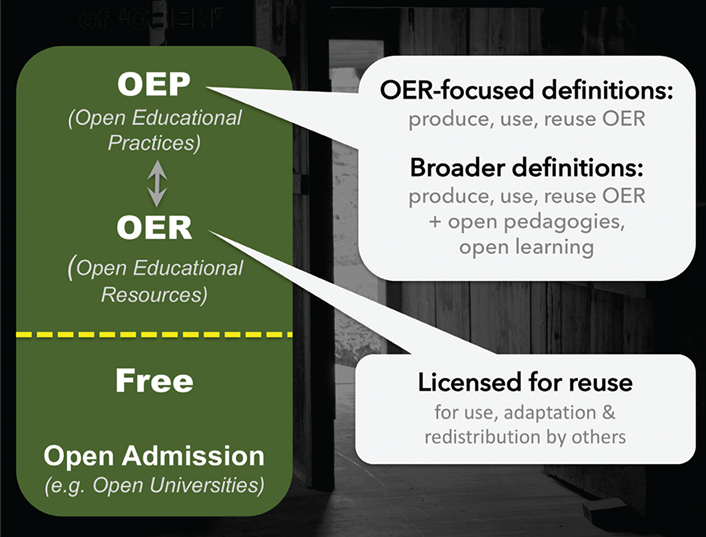
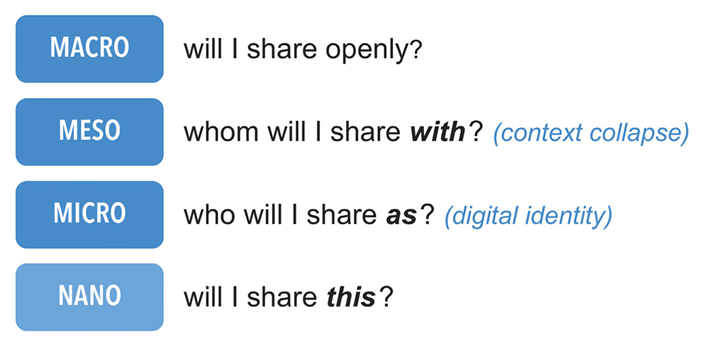
In 2014, administrators at Central Piedmont Community College (CPCC) in Charlotte, North Carolina, began talks with members of the North Carolina State Board of Community Colleges and North Carolina Community College System (NCCCS) leadership about starting a CBE program.
Building on an existing project at CPCC for identifying the elements of a digital learning environment (DLE), which was itself influenced by the EDUCAUSE publication The Next Generation Digital Learning Environment: A Report on Research,1 the committee reached consensus on a DLE concept and a shared lexicon: the “Digital Learning Environment Operational Definitions,
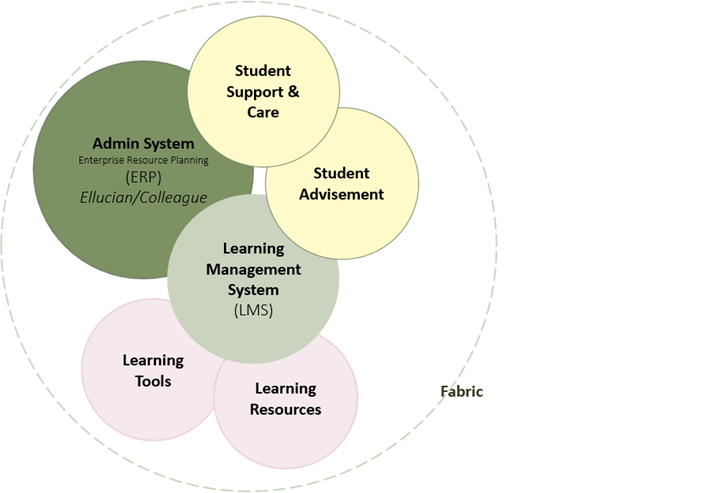
New research indicates all local males on the Iberian peninsula were killed by hostile invaders with superior technology
MANUEL ANSEDE 4 OCT 2018 – 02:36 EDT
https://elpais.com/elpais/2018/10/03/inenglish/1538568010_930565.html
More than 5,000 years ago a nomadic group of shepherds rode out of the steppes of eastern Europe to conquer the rest of the continent. The group, today known as the Yamna or Pit Grave culture, brought with them an innovative new technology, wheeled carts, which enabled them to quickly occupy new lands. More than 4,500 years ago, the descendants of these people reached the Iberian peninsula and wiped out the local men, according to new research by a team of international scientists.
colonized by the first Neolithic migration wave 8,000 or 9,000 years ago but also by a later one 4,500 years ago, which brought with it a very different culture
War axes and carts with four wheels can be found in the layers of earth that date back 4,500 years. “From then on, almost all men’s tombs were filled with weaponry, adornments, displays of wealth. The archaeology reveals marked signs of a hierarchical society that broke with the old egalitarianism of the early Neolithic period.
This research team announced they had discovered a “discontinuity” in the Y chromosome during the Bronze Age in the Iberian Peninsula, after studying the DNA of the remains of 14 people found in archaeological sites in Portugal.
“In terms of why the Y chromosome was replaced, we could speculate that the populations from the steppes had superior technology, better weapons and also domesticated horses that could have given them an advantage in war
+++++++++++++
more on history in this IMS blog
https://blog.stcloudstate.edu/ims?s=history